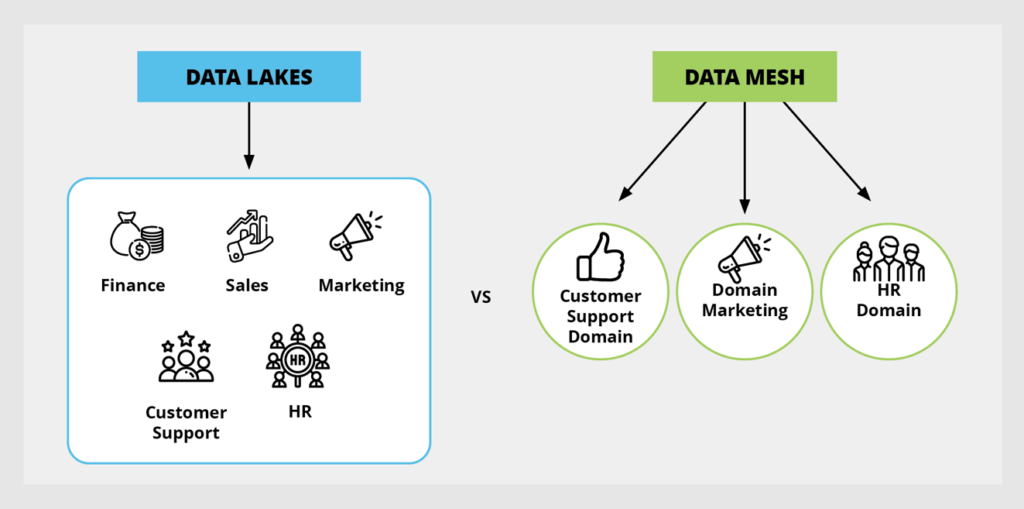How legacy systems are threatening security in mergers & acquisitions

Legacy systems are far more likely to get hacked. This is especially true for companies that become involved in private equity transactions, such as mergers, acquisitions, and divestitures. These transactions often result in IT system changes and large movements of data and financial capital which leave organizations acutely vulnerable. With details of these transactions being publicized or publicly accessible, threat actors can specifically target companies likely to be involved in such deals. We have seen two primary trends throughout 2023: Threat groups are closely following news cycles, enabling them to quickly target entire portfolios with zero-day attacks designed to upend aging technologies; disrupting businesses and their supply chains; Corporate espionage cases are also on the rise as threat actors embrace longer dwell times and employ greater calculation in methods of monetizing attacks. Together, this means the number of strategically calculated attacks — which are more insidious than hasty smash-and-grabs — are on the rise.
How Frontend Devs Can Take Technical Debt out of Code

To combat technical debt, developers — even frontend developers — must see their work as a part of a greater whole, rather than in isolation, Purighalla advised. “It is important for developers to think about what they are programming as a part of a larger system, rather than just that particular part,” he said. “There’s an engineering principle, ‘Excessive focus on perfection of art compromises the integrity of the whole.’” That means developers have to think like full-stack developers, even if they’re not actually full-stack developers. For the frontend, that specifically means understanding the data that underlies your site or web application, Purighalla explained. “The system starts with obviously the frontend, which end users touch and feel, and interface with the application through, and then that talks to maybe an orchestration layer of some sort, of APIs, which then talks to a backend infrastructure, which then talks to maybe a database,” he said. “That orchestration and the frontend has to be done very, very carefully.” Frontend developers should take responsibility for the data their applications rely on, he said.
Digital Innovation: Getting the Architecture Foundations Right

While the benefits of modernization are clear, companies don’t need to be
cutting edge everywhere, but they do need to apply the appropriate architectural
patterns to the appropriate business processes. For example, Amazon Prime
recently moved away from a microservices-based architecture for streaming media.
In considering the additional complexity of service-oriented architectures, the
company decided that a "modular monolith” would deliver most of the benefits for
much less cost. Companies that make a successful transition to modern enterprise
architectures get a few things right. ... Enterprise technology architecture
isn’t something that most business leaders have had to think about, but they
can’t afford to ignore it any longer. Together with the leaders of the
technology function, they need to ask whether they have the right architecture
to help them succeed. Building a modern architecture requires ongoing
experimentation and a commitment to investment over the long term.
GenAI isn’t just eating software, it’s dining on the future of work
As we step into this transformative era, the concept of “no-collar jobs” takes
center stage. Paul introduced this idea in his book “Human + Machine,” where new
roles are expected to emerge that don’t fit into the traditional white-collar or
blue-collar jobs; instead, it’s giving rise to what he called ‘no-collar jobs.’
These roles defy conventional categories, relying increasingly on digital
technologies, AI, and automation to enhance human capabilities. In this
emergence of new roles, the only threat is to those “who don’t learn to use the
new tools, approaches and technologies in their work.” While this new future
involves a transformation of tasks and roles, it does not necessitate jobs
disappearing. ... Just as AI has become an integral part of enterprise software
today, GenAI will follow suit. In the coming year, we can expect to see
established software companies integrating GenAI capabilities into their
products. “It will become more common for companies to use generative AI
capabilities like Microsoft Dynamics Copilot, Einstein GPT from Salesforce or,
GenAI capabilities from ServiceNow or other capabilities that will become
natural in how they do things.”
The components of a data mesh architecture

In a monolithic data management approach, technology drives ownership. A single
data engineering team typically owns all the data storage, pipelines, testing,
and analytics for multiple teams—such as Finance, Sales, etc. In a data mesh
architecture, business function drives ownership. The data engineering team
still owns a centralized data platform that offers services such as storage,
ingestion, analytics, security, and governance. But teams such as Finance and
Sales would each own their data and its full lifecycle (e.g. making code changes
and maintaining code in production). Moving to a data mesh architecture brings
numerous benefits:It removes roadblocks to innovation by creating a self-service
model for teams to create new data products: It democratizes data while
retaining centralized governance and security controls; It decreases data
project development cycles, saving money and time that can be driven back into
the business. Because it’s evolved from previous approaches to data management,
data mesh uses many of the same tools and systems that monolithic approaches
use, yet exposes these tools in a self-service model combining agility, team
ownership, and organizational oversight.
Six major trends in data engineering
Some modern data warehouse solutions, including Snowflake, allow data providers
to seamlessly share data with users by making it available as a feed. This does
away with the need for pipelines, as live data is shared in real-time without
having to move the data. In this scenario, providers do not have to create APIs
or FTPs to share data and there is no need for consumers to create data
pipelines to import it. This is especially useful for activities such as data
monetisation or company mergers, as well as for sectors such as the supply
chain. ... Organisations that use data lakes to store large sets of structured
and semi-structured data are now tending to create traditional data warehouses
on top of them, thus generating more value. Known as a data lakehouse, this
single platform combines the benefits of data lakes and warehouses. It is able
to store unstructured data while providing the functionality of a data
warehouse, to create a strategic data storage/management system. In addition to
providing a data structure optimised for reporting, the data lakehouse provides
a governance and administration layer and captures specific domain-related
business rules.
From legacy to leading: Embracing digital transformation for future-proof growth

Digital transformation without a clear vision and roadmap is identified as a big
reason for failure. Several businesses may adopt change because of emerging
trends and rapid innovation without evaluating their existing systems or
business requirements. To avoid such failure, every tech leader must develop a
clear vision, and comprehensive roadmap aligned with organizational goals,
ensuring each step of the transformation contributes to the overarching vision.
... The rapid pace of technological change often outpaces the availability of
skilled professionals. In the meantime, tech leaders may struggle to find
individuals with the right expertise to drive the transformation forward. To
address this, businesses should focus on strategic upskilling using IT value
propositions and hiring business-minded technologists. Furthermore, investing in
individual workforce development can bridge this gap effectively. ... Many
organizations grapple with legacy systems and outdated infrastructure that may
not seamlessly integrate with modern digital solutions.
7 Software Testing Best Practices You Should Be Talking About

What sets the very best testers apart from the pack is that they never lose
sight of why they’re conducting testing in the first place, and that means
putting user interest first. These testers understand that testing best
practices aren’t necessarily things to check off a list, but rather steps to
take to help deliver a better end product to users. The very best testers never
lose sight of why they’re conducting testing in the first place, and that means
putting user interest first. To become such a tester, you need to always
consider software from the user’s perspective and take into account how the
software needs to work in order to deliver on the promise of helping users do
something better, faster and easier in their daily lives. ... In order to keep
an eye on the bigger picture and test with the user experience in mind, you need
to ask questions and lots of them. Testers have a reputation for asking
questions, and it often comes across as them trying to prove something, but
there’s actually an important reason why the best testers ask so many
questions.
Why Data Mesh vs. Data Lake Is a Broader Conversation

Most businesses with large volumes of data use a data lake as their central
repository to store and manage data from multiple sources. However, the growing
volume and varied nature of data in data lakes makes data management
challenging, particularly for businesses operating with various domains. This is
where a data mesh approach can tie in to your data management efforts. The data
mesh is a microservice, distributed approach to data management whereby
extensive organizational data is split into smaller, multiple domains and
managed by domain experts. The value provided by implementing a data mesh for
your organization includes simpler management and faster access to your domain
data. By building a data ecosystem that implements a data lake with data mesh
thinking in mind, you can grant every domain operating within your business its
product-specific data lake. This product-specific data lake helps provide
cost-effective and scalable storage for housing your data and serving your
needs. Additionally, with proper management by domain experts like data product
owners and engineers, your business can serve independent but interoperable data
products.
The Hidden Costs of Legacy Technology

Maintaining legacy tech can prove to be every bit as expensive as a digital
upgrade. This is because IT staff have to spend time and money to keep the
obsolete software functioning. This wastes valuable staff hours that could be
channeled into improving products, services, or company systems. A report from
Dell estimates that organizations currently allocate 60-80% of their IT budget
to maintaining existing on-site hardware and legacy apps, which leaves only
20-40% of the budget for everything else. ... No company can defer
upgrading its tech indefinitely: sooner or later, the business will fail as its
rivals outpace it. Despite this urgency, many business leaders mistakenly
believe that they can afford to defer their tech improvements and rely on dated
systems in the meantime. However, this is a misapprehension and can lead to
‘technical debt.’ ‘Technical debt' describes the phenomenon in which the use of
legacy systems defers short-term costs in favor of long-term losses that are
incurred when reworking the systems later on.
Quote for the day:
"Always remember, your focus determines
your reality." -- George Lucas
No comments:
Post a Comment